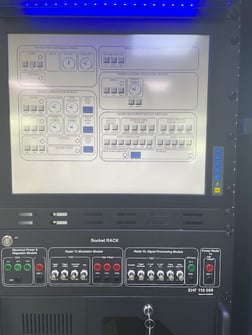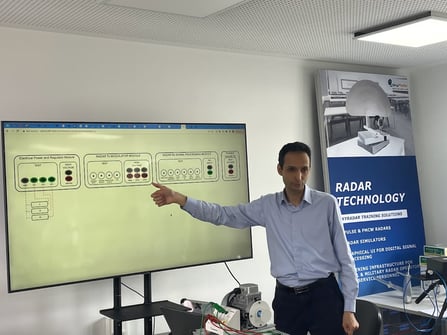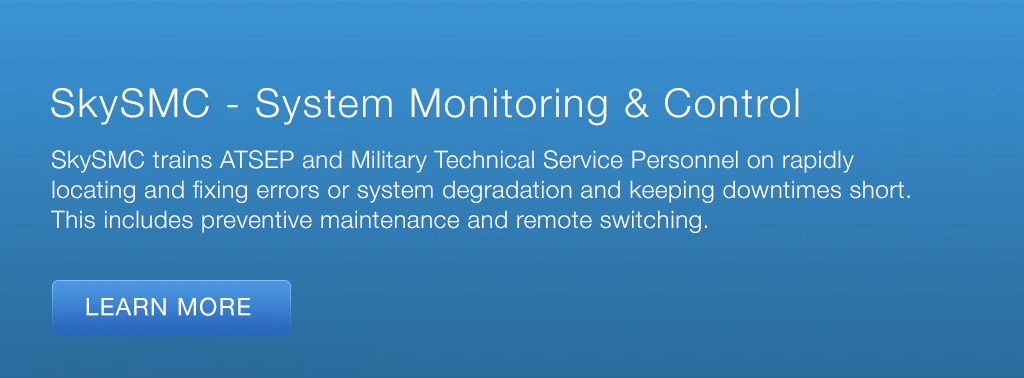Receiver-related clutter errors can significantly impact Air Traffic Control (ATC) services, compromising safety and efficiency. This article delves into the definition of receiver-related clutter errors, examines their causes, illustrates their impact through pedagogical scenarios, discusses common types of such errors, outlines their consequences, highlights reported aviation incidents, provides rectification steps for Air Traffic Safety Electronics Personnel (ATSEP), suggests prevention measures, presents general research highlights, and offers relevant references.
Definition of Receiver-Related Clutter Error
Receiver-related clutter errors refer to the erroneous or misleading radar returns caused by clutter (e.g., ground objects, atmospheric conditions) interfering with the detection and interpretation of aircraft targets. These errors occur in the receiver subsystem of radar systems used in ATC. Clutter can obscure or mimic aircraft signals, leading to incorrect or false identifications and affecting the accuracy of the ATC system.
Example of Receiver-Related Clutter Error
Consider a radar system detecting aircraft in the vicinity of a mountain range. The clutter caused by the mountains can create false returns on the radar display, mimicking aircraft targets. If not properly identified and filtered out, ATC operators may mistake these clutter returns for actual aircraft, potentially leading to misjudgments, conflicting instructions, and compromised situational awareness.
Scenario 1: Mountainous Terrain
Imagine an ATC scenario where the radar system is subject to clutter errors due to mountainous terrain. As a result, clutter returns resembling aircraft targets appear on the radar display, leading to confusion among ATC operators. Misinterpretation of clutter as real aircraft can result in unnecessary communication, inefficient routing of aircraft, and increased workload for ATC personnel. In extreme cases, the clutter errors can lead to delayed or incorrect instructions, posing safety risks and potential airspace congestion.
Scenario 2: Adverse Weather Conditions
Consider an ATC scenario where adverse weather conditions, such as heavy rain or fog, cause clutter errors on the radar display. The clutter returns may obscure or mask real aircraft targets, making it challenging for ATC operators to accurately track and identify aircraft. This can lead to delays in providing essential information to pilots, compromised separation between aircraft, and increased risks of collision or near-miss incidents. The impact of receiver-related clutter errors during adverse weather conditions can disrupt the flow of air traffic, reduce airspace capacity, and strain ATC resources.
Factors Responsible for Receiver-Related Clutter Error
Receiver-related clutter errors can be attributed to various factors, including
Radar system design and sensitivity
The design of the radar system can affect the amount of clutter that is received. For example, a radar system with a narrow beamwidth will receive less clutter than a radar system with a wide beamwidth. The sensitivity of the radar system can also affect the amount of clutter that is received. A radar system with a low sensitivity will receive more clutter than a radar system with a high sensitivity.
Environmental conditions
The environmental conditions can also affect the amount of clutter that is received. For example, a radar system operating in a cluttered environment, such as near the ground or near the sea, will receive more clutter than a radar system operating in a clear environment.
Antenna characteristics
The characteristics of the antenna can also affect the amount of clutter that is received. For example, an antenna with a high gain will receive more clutter than an antenna with a low gain.
Clutter rejection algorithms
The clutter rejection algorithms used by the radar system can also affect the amount of clutter that is received. A well-designed clutter rejection algorithm will be able to remove more clutter than a poorly designed clutter rejection algorithm.
Signal processing techniques
The signal processing techniques used by the radar system can also affect the amount of clutter that is received. For example, a radar system that uses pulse compression will receive less clutter than a radar system that does not use pulse compression.
Inadequate clutter filtering
Inadequate clutter filtering can also lead to receiver-related clutter errors. Clutter filtering is the process of removing unwanted signals from the radar signal. If the clutter filter is not effective, it can allow clutter to pass through and be displayed on the radar screen.
Suboptimal radar settings
Suboptimal radar settings can also lead to receiver-related clutter errors. For example, if the radar gain is set too high, it can cause the radar to receive more clutter than it would if the gain were set lower.
Improper calibration
Improper calibration can also lead to receiver-related clutter errors. Calibration is the process of ensuring that the radar system is operating correctly. If the radar system is not calibrated properly, it can receive more clutter than it would if it were calibrated properly.
Limitations in clutter detection algorithms
Limitations in clutter detection algorithms can also lead to receiver-related clutter errors. Clutter detection algorithms are used to identify clutter signals. If the clutter detection algorithm is not effective, it can cause the radar to display clutter signals as targets.
Common Types of Receiver-Related Clutter Error
Some common types of receiver-related clutter errors include
Range Ambiguities
Range ambiguities are a common type of receiver-related clutter error in radar systems. They occur when the radar receives reflected signals that have traveled a longer path than expected, resulting in multiple detections of the same target at different ranges. This can lead to incorrect distance measurements and ambiguity in target location. Range ambiguities can be caused by various factors such as strong reflections from nearby objects, multipath propagation, or interference from other radar systems operating in the vicinity.
Range Sidelobes
Range sidelobes are spurious radar returns that appear at specific distances from the main radar beam. They occur due to imperfections in the radar antenna pattern and can result in false detections or misinterpretation of targets. Range sidelobes are typically unwanted signals that leak out from the main beam and can be caused by antenna design flaws, mechanical issues, or electromagnetic interference.
Velocity Sidelobes
Velocity sidelobes, similar to range sidelobes, are spurious radar returns that appear at specific velocities away from the true velocity of a target. They can occur due to imperfections in the radar antenna or signal processing techniques. Velocity sidelobes can introduce errors in target velocity measurements and affect the accuracy of tracking moving targets.
Ionospheric Scintillation
Ionospheric scintillation refers to the rapid fluctuations in the amplitude and phase of radar signals caused by irregularities in the Earth's ionosphere. These fluctuations can create random variations in the radar return signals, leading to increased clutter and reduced target detection performance. Ionospheric scintillation is particularly prominent at higher frequencies and can be influenced by factors such as solar activity, atmospheric conditions, and geographical location.
Ground Clutter
Ground objects, such as buildings, trees, or terrain, can produce clutter returns that interfere with the detection of aircraft targets, leading to false or ambiguous radar signals.
Weather-Related Clutter
Adverse weather conditions, such as rain, snow, or fog, can generate clutter returns that mask or distort aircraft signals, affecting the accuracy and reliability of ATC radar systems.
Sea Clutter
Near coastal areas or large bodies of water, clutter caused by wave reflections or maritime structures can create false radar returns, potentially confusing ATC operators and compromising target identification.
Chaff Clutter
Military operations involving the deployment of chaff, which are small metallic strips or particles used to confuse enemy radar systems, can inadvertently produce clutter returns on ATC radars, leading to false aircraft detections.
Impact of Receiver-Related Clutter Error on ATC Services
The impact of receiver-related clutter errors on ATC services can be substantial and can include:
|
Heading |
Details |
|
Safety |
Receiver related clutter error can lead to false targets being displayed on radar screens, which can in turn lead to incorrect air traffic control decisions. This can have serious consequences, such as aircraft collisions. |
|
Efficiency |
Receiver related clutter error can make it difficult for air traffic controllers to track aircraft, which can lead to delays and congestion in the airspace. |
|
Cost |
Receiver related clutter error can lead to increased costs for air traffic control agencies, as they have to invest in new equipment and training to mitigate the effects of the error. |
Compromised Safety
Clutter errors can lead to misidentification of aircraft targets, potentially resulting in conflicting instructions, compromised separation between aircraft, and an increased risk of accidents or near-miss incidents.
Reduced Efficiency
Erroneous clutter returns can lead to increased workload for ATC operators, as they must discern between genuine aircraft targets and clutter. This can result in delays in providing essential information to pilots, inefficient routing of aircraft, and potential airspace congestion.
Degraded Situational Awareness
Clutter errors can obscure or mask genuine aircraft targets on the radar display, reducing the situational awareness of ATC operators. This can impede their ability to make informed decisions and respond effectively to changing traffic conditions.
Increased Communication
False clutter returns may prompt unnecessary communication between ATC and pilots, as operators attempt to verify the legitimacy of radar targets. This can contribute to increased radio congestion and potential delays in critical communications.
Steps to Rectify Receiver-Related Clutter Error
ATSEP play a crucial role in rectifying receiver-related clutter errors. Some essential steps they can take include
Calibration and Maintenance
Regular calibration and maintenance of radar systems to ensure optimal performance and accuracy in clutter detection and rejection.
Clutter Filtering and Signal Processing
Implementing advanced clutter filtering algorithms and signal processing techniques to minimize clutter interference and enhance the accuracy of target detection.
System Upgrades and Enhancements
Upgrading radar systems with improved clutter rejection capabilities, enhanced antenna designs, and advanced software algorithms to reduce clutter errors.
Training and Skill Development
Providing comprehensive training to ATSEP on the identification and rectification of clutter errors, ensuring they have the necessary skills and knowledge to address such issues effectively.
Steps to Prevent Receiver-Related Clutter Error
To prevent receiver-related clutter errors, ATSEP can undertake the following steps
System Design and Configuration
Ensuring radar systems are designed and configured appropriately, taking into account clutter rejection capabilities, environmental factors, and clutter filtering techniques.
Environmental Monitoring
Continuously monitoring environmental conditions, such as weather patterns, and adjusting radar parameters accordingly to mitigate clutter interference.
Quality Assurance
Implementing robust quality assurance processes during the development and installation of radar systems to minimize the occurrence of clutter errors.
Research and Innovation
Engaging in ongoing research and innovation to enhance clutter rejection algorithms, optimize radar system performance, and improve the detection and interpretation of aircraft targets.
Research Highlights on Receiver-Related Clutter Error
Research on receiver-related clutter errors focuses on understanding their causes, consequences, and prevention. Notable research highlights include identifying the factors contributing to clutter errors, developing advanced clutter rejection algorithms, investigating the impact on ATC services, and exploring innovative radar system designs to mitigate clutter interference. Studies also aim to analyze reported aviation incidents related to clutter errors and propose rectification measures. General research highlights demonstrate the ongoing efforts to improve ATC safety and efficiency by addressing receiver-related clutter errors.
SkyRadar's System Monitoring & Control Solution
SkySMC - SkyRadar’s System Monitoring and Control Suite is a pedagogically enhanced, fully operational monitoring & control tool. We have optimized it to cater for the ATSEP-SMC training compliant to EASA's Easy Access Rules for ATM-ANS (Regulation (EU) 2017/373) and ICAO Doc 10057.
SkyRadar provides SkySMC as a complete laboratory in a turn-key approach, or as a service.
SkySMC is not a simulator, but a fully operational open monitoring system. It comes by default with a server including various virtualized applications and virtualized servers, but also connects to simulated systems. In addition, there are various hardware extensions available including training infrastructures, monitorable training radars, or even complete ATM systems, all connected to the System Monitoring & Control solution. Most components such as the radars, it IT infrastructure or networks exist in hardware and software (virtualized or simulated). The two photos above show the same socket panel in real hardware and in the simulator (fully functioning).
SkyRadar's System Monitoring & Control training system can be easily blended into distance learning solutions.
Let's talk
Stay tuned to be always the first to learn about new use cases and training solutions in ATSEP qualification (real radars or simulators).
Or simply talk to us to discuss your training solution.






